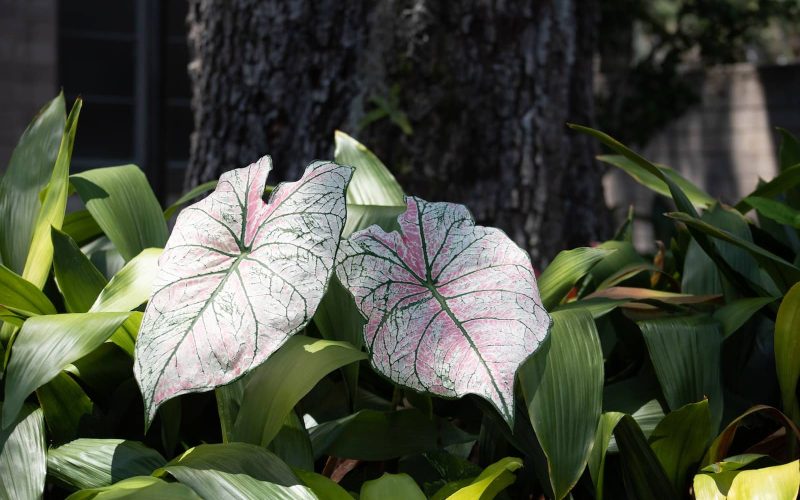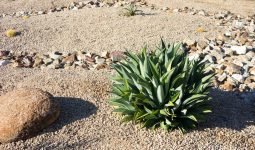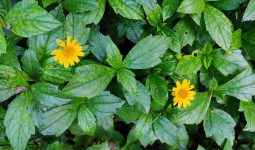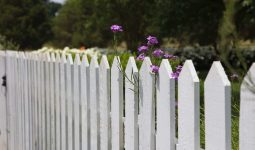If you want to bring color and beauty into your home or office. Adding caladium houseplants may be just the thing you need.
These plants make great additions to both indoor and outdoor spaces.
Many varieties can tolerate all but the harshest weather conditions. So, if you like to travel frequently, leave your plants at home.
You can bring one without worrying about what it will do on your trip.
Plus, there are many different caladium houseplants, no matter what you’re looking for in a plant.
You’ll be able to find one that fits all of your needs perfectly!
What is a Caladium Houseplant?
Caladium Houseplant is a pretty flower that grows like a taro leaf. In their native habitat, these plants prefer to be close to the water and thrive in marshy soil. They are sensitive to light, preferring shade during the day.
It’s no wonder why they do so well as houseplants! The wide variety of colors and sizes offers something for everyone. Caladiums are flowering plants that grow best indoors.
Caladiums are perfect for homes and apartments with dark, humid, and mild atmospheres. Plant lovers especially love them.
This is because they grow quickly, have large, showy leaves with thick white veins, and have beautiful green flowers.
Caladiums are perfect indoor plants because they love heat and moist soil and are potted in a pot with a thick outer layer of peat moss around the root ball.
Growing them can be difficult, but this short list will help you maintain your caladiums home! Be careful not to overwater or underwater your plant; make sure the soil is dry before watering it again. You should water 1 inch every 5-7 days for best results.
Different Types of Caladium Houseplant
1. White Christmas
While they might not be Christmas colors, there are still a few ways to bring the holiday spirit into your home without a lit-up tree.
One way is to introduce new foliage plants to your space, specifically white caladiums. These plants resemble snowy winter trees and can add to any room’s festive factor.
Not only do they have an aesthetic purpose for holiday decorating, It also works as an air purifier in homes with high indoor pollution, such as wood smoke or products. Like aerosol spray, paint releases volatile organic compounds (VOCs) into the air.
2. Splash of Wine
A splash of Wine can be an appropriate choice among the different types of caladium houseplants. If you are considering this type of plant, you should be aware that it needs plenty of moisture and will thrive if given water about once every two days.
Splash of Wine also does well in shade or partial sun and requires little upkeep. Consider the types and sizes that would work best for your home.
3. Pink Symphony
The Pink Symphony Caladium, which has a height and spread of about 15 inches, certainly lives up to its name. Its leaves are nearly entirely pale pink except for the margins. Which are green, and the veins on the leaves are also green.
This plant may lend a sense of elegance to any space because of its thin rose stalks and small—to medium-sized leaves. The Pink Symphony doesn’t mind a little exposure to light, so it’s best if that room gets strong indirect light.
4. Miss Muffet
Caladium houseplants are evergreen plants that can add a tropical touch to your indoor or outdoor garden. These plants do not take much care and require little to no maintenance!
The word caladium comes from the Greek words kaladion and daktylon, which mean reed-leaf. Due to their large leaves, caladiums are also known as elephant ears.
If you’re looking for different types of caladium for fun activities with your children this summer, think about planting some in your garden!
5. Carolyn Whorton
Caladium houseplants are some of the most versatile plants you can have in your home. They come in various colors and do not need much to survive.
In the south, they often grow wild, with thick vines that grow up along trees and cling to them from tree to tree.
In more northern climates, you may need to bring them inside for the winter months. They thrive as low-light plants but will also green up nicely if given enough sun throughout the summer months.
6. Fannie Munson
The caladium houseplant is one of the different types of caladium native to the United States, growing wild in Florida and Louisiana.
They are an excellent accent for shady areas as they can grow up to three feet tall. The leaves range from green to pink or even purple-brown with a waxy coating that protects them from the sun’s ultraviolet rays.
The size of the leaf is proportional to the height of the plant and will be larger at ground level than near the top.
The Tiger Eyes is particularly effective when planted in masses. It is a Caladium type with large leaves and a tall growth pattern.
I would recommend this variety if you live in the Southern states, where summers are hot and humid. It should do well anywhere outside of New England.
Tiger Eyes like moist soil and must be watered regularly—but not too much! It also likes full sun to partial shade.
7. Pink Gem
Caladiums have become a popular indoor plant because they are easy to grow and generally hardy. They can thrive in relatively high-light conditions or even low-light conditions, so they are good for any type of home, apartment, office, or dorm.
Like the Florida Sweetheart, the Pink Gem features vibrant green leaves with pink stripes on their undersides. If you’re looking for an unusual color palette, the Pink Gem is your best bet.
In addition to being colorful, caladiums are also excellent air purifiers. The plants release oxygen during photosynthesis, which helps remove toxic chemicals from the air.
If you want to experience natural relief from allergies or other respiratory problems, keep a few pots of these around your living space!
8. Florida Sweetheart
Another ‘dwarf’ Caladium type, the Florida Sweetheart, boasts broad leaves with pink-red, ruffled, green edges.
If you’re looking for something different, this is your plant. It has a very exotic look and color that stands out from other types of Caladium.
The growing requirements are similar to those of most Caladiums, but they can take partial shade if needed. The best thing about these plants is their ease of care!
They are perfect for anyone who wants a gorgeous leafy plant but has no time or inclination to do any work!
9. Gingerland
Gingerland is a well-known online retailer that specializes in rare and exotic plants. While most people would say that the color green is more to their liking, there are those who prefer to rest their eyes from such intense natural beauty.
For these individuals, caladiums may be the perfect solution as these are not just green but come in many other colors. Since it’s often overlooked for its drab color, many people do not realize what a useful plant this one can be.
Ginger adds to the décor because it stands out from all other plants with its bright colors. When placed inside the house, ginger will also keep mosquitoes away!
10. Freckles
The Freckles Caladium cultivar is a must-try if you’re looking for simplicity in a foliage plant. It does not disappoint. This plant has heart-shaped leaves with tiny, nearly rectangular areas of cream and red-orange color.
It looks great in pots but can also be cultivated in flowerbeds or as a border plant. Additionally, this Caladium can tolerate full sun!
What is so great about these plants? This is one of the different types of caladium houseplants, which come in various colors and textures.
They are typically shade-loving plants, easy to grow, and make an attractive ground cover. The leaves are considered heart-shaped as well, which makes them a showstopper.
Add their low-maintenance requirements, and you have the perfect plant for your home or business!
11. Scarlet Flame
Caladium houseplants are great because they bring color to your home and help clean the air. One way they do this is by using their leaves, stems, and roots to store important nutrients such as nitrogen, potassium, phosphorus, and sulfur.
Then, they release these nutrients into the air when conditions are right, like after a rainstorm. Plants are smart in doing this because it allows them to convert CO2 into oxygen. In addition to helping create cleaner air for humans, it also helps plants get what they need!
12. Burning Heart
Caladium houseplant is tropical looking, with large heart-shaped leaves ranging from lime green to chartreuse.
The plant prefers shade and humid conditions, making it a perfect candidate for indoor growth. This foliage is easy to care for because it requires very little water or sunlight to thrive.
The only downside is that the leaves can be poisonous if eaten by humans or pets. So watch out for curious kids and pets who want to chow down on this bright green plant!
13. Snow Drift
Many different caladium houseplants offer different color, form, and texture options. Snow Drift is known for its attractive foliage that looks like feather plumes.
Additionally, this plant thrives on neglect and will take any soil to produce large leaves up to 2 feet in size. This variety also works well in full sun or partial shade conditions and can withstand drought.
14. Raspberry Moon
A caladium is an attractive indoor flowering houseplant with cool temperatures and indirect light.
Caladiums like moist soil with a peaty or leaf-based potting mix. For good drainage, add sand to the potting mix before planting.
Also, note that they need weekly watering during their growing season and infrequent watering in their dormant phase.
After watering, remove any excess water droplets on the leaves by gently wiping them off with a soft cloth or paper towel to prevent leaves from rotting or getting moldy.
15. Lemon Blush
A favorite for indoor and outdoor decorating, the caladium houseplant is ideal for any living environment.
One of the different types of caladium that is most popular is lemon blush, which has been bred for its hardiness and bright-colored leaves.
The caladium’s large heart-shaped leaves are various shades of green, from light to dark, and have patterns ranging from bronze to purple.
Also, it produces white or pinkish flowers on a tall spike that can be kept in your garden after the blossoms fade. Overall, this plant’s thick stalks make it perfect for reaching upwards.
It gives it more height and supports the weight of the leaves atop them. As such, they make excellent focal points while filling out indoor spaces with ample greenery.
Guide on How to Get Rid of Mealybugs on Caladium Houseplants
Caladium houseplants are among the most common plants found at garden centers and home improvement stores because they are so easy to grow.
The plants usually arrive with large, attractive leaves ranging from green to deep purple.
Even though they may look complicated, they’re quite simple to care for.
Here are what to learn to keep them looking their best:
- Soil pH: Plant roots need acidic soil, but they do not like extreme changes in pH. If you change your soil type or add other things, such as fertilizer or organic materials. Test the soil’s pH using an inexpensive electronic kit before planting your caladium.
- Temperature: They thrive in average temperatures of around 60 degrees Fahrenheit during winter and 90 degrees Fahrenheit during summer. In the Northern Hemisphere, this means overwintering indoors between October and March.
- Humidity: Keep humidity levels between 40% – 60%. Misting them daily is best; standing water should be avoided since it will rot roots and encourage pests like mealybugs to settle in on your plant. That said, make sure your pot has drainage holes.
- You can get rid of mealybugs by spraying them off with a strong stream of water; some people also suggest treating infested areas with insecticidal soap if they appear resistant to regular sprays.
Conclusion
Overall, the different types of caladium are fantastic, low-maintenance houseplants that will keep any room looking fresh and inviting.
They’re also relatively easy to grow and require minimal sunlight so that they can thrive anywhere in your home or office.
Caladium houseplants can bring good luck to your home. There are many varieties, but it’s important to understand which type you can use.
Which ones would be best left to grow outside or in a greenhouse in your home? Check out the different types of caladium houseplants listed above and learn how they can bring you good luck.
And prosperity wherever you place them in your home! If you have any other questions about caring for these beautiful plants, we’d be happy to help!
Frequently Asked Questions
Stress from the environment and genetics are two potential triggers for reversion to green. I believe the lack of sunlight is harming your variegated foliage. Variegated leaves often require light to maintain their variegation, but the amount varies.
Around once every week. Caladiums prefer evenly moist soil but ensure it’s damp rather than sopping wet. When the top inch of soil on your Caladium becomes dry, water it thoroughly, often once a week. Caladiums, a tropical tuber plant, prefer high humidity.








